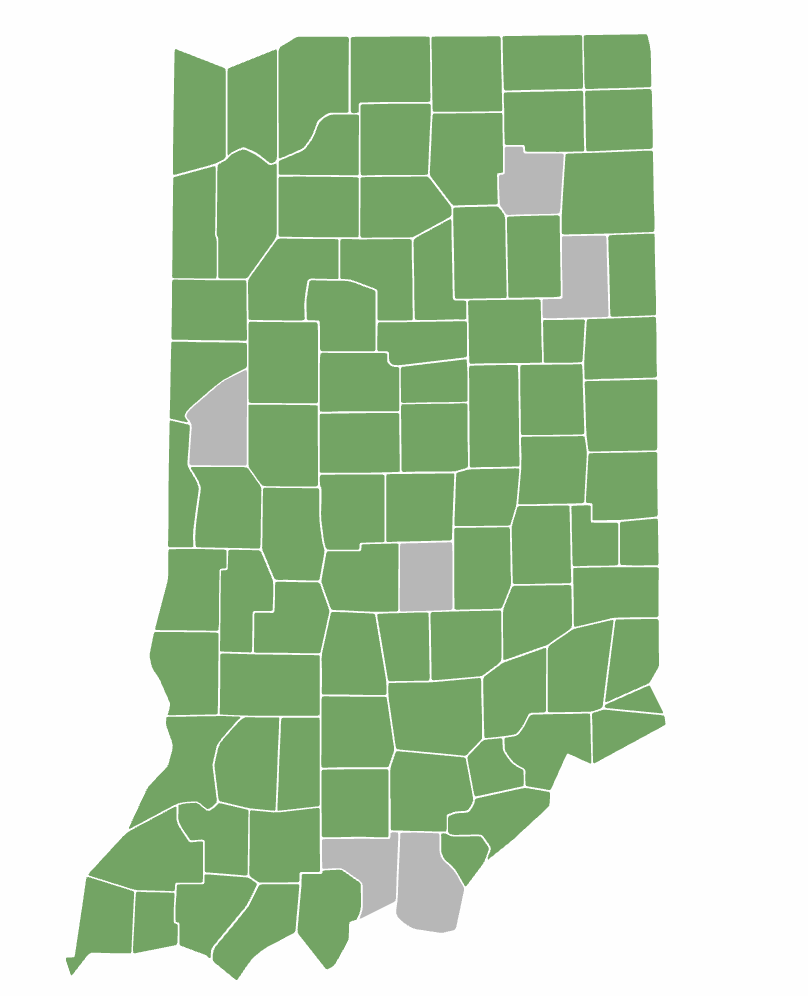All 92 counties opt in for 2025 public health funding

Each of Indiana's 92 counties appears to have opted into the 2025 Health First Indiana program, which provides enhanced funding to local public health departments. (Getty Images)
Every county in Indiana seems to have signed onto a state effort to provide $150 million in enhanced funding for public health departments in the coming year in exchange for providing “core” public health services.
The Indiana Capital Chronicle called six holdout counties who opted out of the program in 2024, each of which will be participating in the 2025 cohort. Barring any changes to the 86 counties who participated last year, every county will get additional funding from the Indiana Department of Health’s Health First Indiana program.
To see county-specific details, including health metrics and funding amounts, visit healthfirstindiana.in.gov.
For Theresa Baysinger, a county commissioner from Whitley County, the decision to opt out last year was due to concerns about “regionalizing health departments” and worries about needing to hire new employees to meet grant requirements.
“Obviously what works for one county doesn’t work for another. So we wanted to hold that autonomy for us to make decisions for our county,” Baysinger said. “But the more we’re learning from surrounding counties, and just seeing how the programs are working and really diving deep into it, we are going to give it a try.”
Should lawmakers decide to renew funding for 2026 and beyond, counties like Whitley can revisit their decision and opt back out.
“We just really hope that it works out and that we can provide a better health department for all Whitley County residents,” Baysinger concluded.
Funding coincides with the fiscal year, which starts on July 1, rather than the calendar year. The Indiana Department of Health didn’t respond to a request for comment.
Health First Indiana background
In 2022, the General Assembly earmarked $225 million for a two-year program to shore up the state’s beleaguered public health program. Prior to the investment, counties spent an average of $55 per resident for public health — far below the national average of $91 — though totals ranged from $83 to $1.25 per Hoosier, depending on their county of residence.
The first $75 million went to public health departments in 86 counties that covered nearly 96% of the population.
“Core” public health services include maternal and child health, tobacco and vaping cessation, chronic disease management, trauma and injury prevention, and more, as defined by state law. More than three-quarters of the funding must cover prevention and health outcome core services while the remaining 22% can be used for regulatory expenses.

Local public health departments have a myriad of duties, including restaurant inspections, certifying tattoo parlors and managing cases of lead exposure.
But six counties — Whitley, Wells, Fountain, Johnson, Crawford and Harrison — all declined to join 2024 efforts for various reasons. Those counties passed up a combined maximum of nearly $3.9 million and instead accepted $387,000 in legacy funding.
The Indiana Capital Chronicle confirmed participation with five of the six counties listed above, with the exception of Harrison County. However, local media report that Harrison County opted into funding last week.
Johnson County, the most populous county of the bunch, gave up the bulk of that funding and could have received $2.1 million in 2024. It qualifies for a minimum of $3.6 million in 2025, with a county match of $789,000, or a maximum of $4.2 million, with a county match of $1.1 million.
In comparison, its legacy funding amounted to $132,000.
Betsy Swearingen, the director of Johnson County’s Public Health Department, said that commissioners voted unanimously to accept funding in 2025 after declining last year.
“My commissioners the year prior had been very thoughtful, waiting to see how the funds rolled out and what it looked like and whether or not it would behoove Johnson to take the money,” Swearingen told the Indiana Capital Chronicle. “And so we revisited it throughout the year, and we realized that we’re doing a lot of programs and not getting paid for it.”
Commissioners and council members met with Swearingen’s agency to discuss what they thought was important for their residents, Swearingen said, and reviewed how the department would use the funding in its budget before deciding to opt in.
“We’re just very excited. We are in our planning stages and partnering with those individuals and groups and really anyone in Johnson County that’s looking to better our public health, and that’s what we plan on pushing out,” Swearingen said.
Reporters Casey Smith and Mia Hilkowitz contributed to this report.
The post All 92 counties opt in for 2025 public health funding appeared first on Indiana Capital Chronicle.

